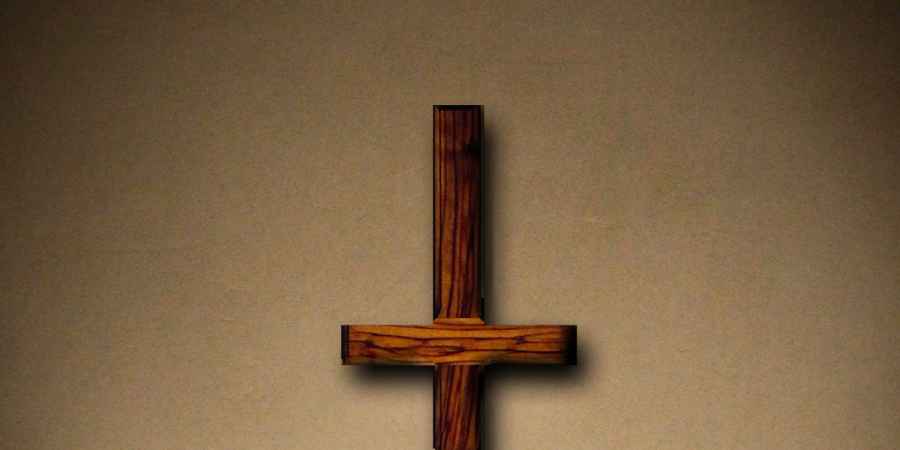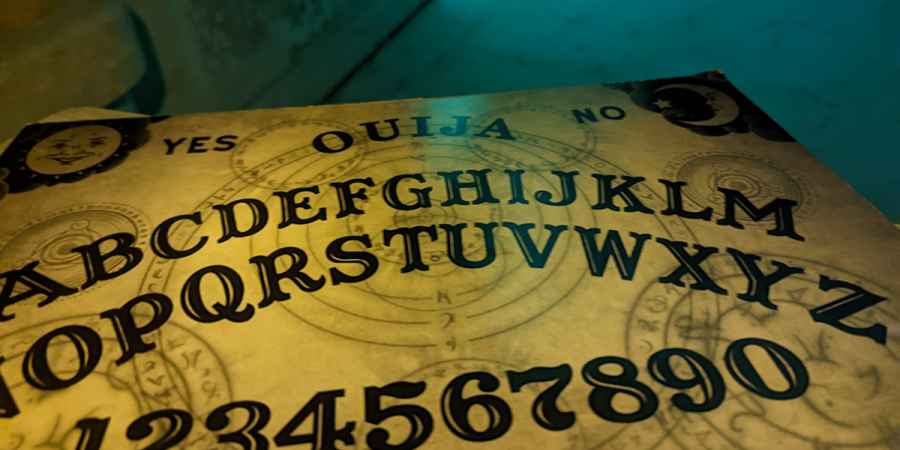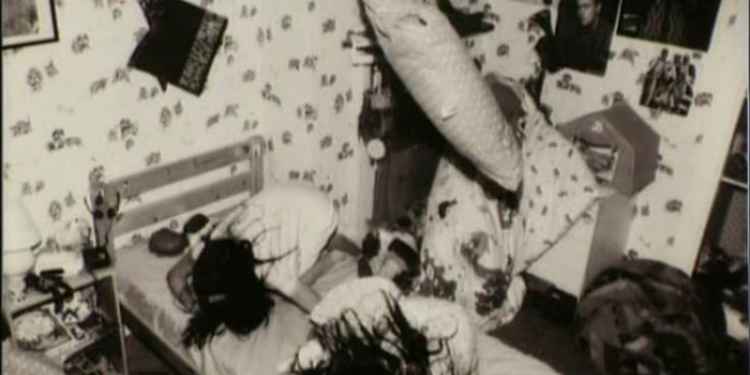

The term "demon" is one that has seemingly become more and more commonly used within the paranormal field over the last few years. Traditionally, it refers to evil, non-human entities that are often rooted in ancient religious texts and folklore. But what exactly is a demon in the modern context of paranormal investigation?
Simply put, a demon is believed to be a malevolent supernatural being. Unlike ghosts, which are typically considered to be the spirits of deceased humans, demons are usually thought to be non-human entities that have existed for centuries. They are considered to be evil spirits that can influence or possess humans, animals, and even objects.
Demons are a common plot device in entertainment, influencing movies, TV shows, and books. Films like 'The Exorcist' and TV shows like 'Supernatural' often portray demons as central antagonists, depicting them as powerful and malevolent beings with evil intent.
When it comes to paranormal research, there are only two schools of thought regarding demons: those who believe demons exist and those who don't. The existence of demons is more disputed than that of ghosts. Even those who believe in ghosts might not necessarily believe in demons.
The signs that ghost hunters are potentially interacting with supernatural entities tend to be subtle. Disembodied knocks, unclear voices in audio recordings, and slight movements of objects are common examples For some, these clues might be explained through natural environmental causes, others might attribute them to ghosts, and a third group might label this activity as demonic.
The truth is, distinguishing between demons, poltergeists, and malevolent human spirits can be challenging due to the overlapping characteristics of these entities. Each type of entity has its own distinct traits and behaviours, but many of their traits, such as moving objects, unusual sounds, and temperature changes, can appear similar, making any definitive conclusion about the nature of a haunting unlikely.
However, like with other aspects of paranormal investigation, there are some commonly believed factors and trends that some believe can help an investigator diagnose a demonic haunting, some of which are unique to demons and some that aren't.
One such sign that is often believed to indicate a demonic presence is the appearance of unusual symbols or markings appearing on walls, floors, or other surfaces. These often include inverted crosses, inverted pentagrams, or other occult symbols associated with dark rituals and malevolent forces.
Another symptom of demons is said to be foul odours, such as sulphur or rotting flesh. These unpleasant smells are often reported in cases of demonic activity, but they are also common in poltergeist cases. Similarly, objects moving are reported in both demonic and poltergeist cases, as well as some cases involving human spirits. This can involve heavy furniture or other objects moving on their own, sometimes with great force.
Unusual or unexpected animal behaviour can also be a sign of the demonic. Pets and other animals may act strangely, such as by barking at nothing, hiding, or showing signs of distress. But, again, this is also reported in non-demonic hauntings when pets are said to act strangely in the presence of a human spirit.
Strange sounds are also linked to many different types of hauntings, and while loud bangs or even screams might be general enough to fit all hauntings, noises such as growls are often said to be more commonly reported in cases of suspected demonic activity. However, the sometimes reported phenomenon of ghost animals could also explain these growls.
Sudden and extreme temperature drops in specific areas, often referred to as "cold spots," are sometimes said to indicate a demonic presence, but this phenomenon also has strong links to human spirits. Specifically, a temperature drop is often said to be the first sign of a ghostly presence.
Perhaps the trait most closely linked specifically to demons is the experience of physical attacks. This can involve witnesses finding mysterious bruises or burns on their bodies without any known cause, or individuals might feel a force pushing or shoving them, sometimes violently. Demons are also blamed for causing frightening apparitions or terrifying dreams, although again, these aren't unique to demonic hauntings.
Many accounts of demonic hauntings might involve scratches, bites, or other physical harm. This behaviour does at first glance seem to tie neatly into the idea of what demons are: malevolent and evil, but we can't ignore the fact that both demons and traditional hauntings involve physical phenomena such as moving objects. Therefore, it should follow that both are capable of physically affecting a person, all that is required is malicious intent. Since humans can be good or evil in life, there's no reason to assume that a human might not continue to be evil as a ghost. Therefore, we can't rule out that an evil ghost is responsible for a physical attack.
However, harm in the form of scratches and bites is often more closely associated with demons, especially when the marks appear in threes. Although ghost hunters generally favour observational methods over strictly biblical descriptions, the religious significance of number three persists. This is believed to mock the Holy Trinity, symbolising the demon's malevolent intent and contempt for sacred symbols. Therefore, while ghost hunters focus on physical signs and manifestations, such as those previously mentioned, they still consider the symbolic importance of certain patterns, like the occurrence of three marks, in their investigations.
Demons are believed to possess abilities that go beyond human capabilities, such as shape-shifting, controlling the elements, or influencing thoughts and actions. While these traits are unique to demons, it's very hard to separate these claims from folklore as they tend to be anecdotal and lacking any tangible evidence.
By nature, demons are thought to have malicious goals, often seeking to cause harm or suffering. This in general is a point of difference from ghosts, which are usually thought to be benign or even helpful, but as previously mentioned, this might not always be the case.
However, demons are said to take this sinister intent a step further. One of the most feared aspects of demons is their alleged ability to possess living beings. This possession is often depicted as taking control of a person's body and mind, leading to erratic and harmful behaviour.
Possession is something that is generally said to be distinct from ghostly behaviour and can be serious enough to require an exorcism to be performed. Many cultures have rituals and religious ceremonies designed to expel demons. In Christianity, exorcism is the practice of casting out demons from an individual, typically performed by a priest or religious figure.
It's not uncommon to hear believers in demons describe them as the most dangerous and malevolent entities that a ghost hunter can encounter. However, the actual risk they pose is a topic of debate. While there are many anecdotal reports of demonic encounters, there is a lack of scientifically verified cases. Most reports are based on personal experiences and cannot be independently corroborated.
The perception of demons as highly dangerous comes from their depiction in folklore, religious texts, and popular culture. Stories of demonic possession, physical attacks, and psychological torment create a fearsome image. Paranormal TV shows and movies, such as 'The Exorcist' or 'The Conjuring', further reinforce this perception by dramatising encounters with demons.
Perhaps the strongest argument against this perceived risk is that so many members of the public are safely exposed to alleged demons on a regular basis. Many ghost hunting events are held in locations reputed to be haunted by demons, and the event may involve attempts to communicate with the demon there.
Locations like the Ancient Ram Inn in Gloucestershire or the Hellfire Caves in Buckinghamshire are reputed to be haunted by demons. These sites host regular ghost hunting events, attracting curious members of the public. Despite the ominous reputation, harm to participants is never reported at these events.
This goes for all locations and events that are understood to be entirely risk-free for the members of the public attending - free of supernatural risks, at least. Ghost hunting events don't result in any harm to guests, despite the huge number of people attending every week.
Although the risk of demons might be debated, there's no doubt that those with existing mental health issues might be susceptible to their influence, even if only through a strong belief in their power. Therefore, if you have any doubts, concerns, or religious beliefs related to demons, then it might be safer to steer clear.
More Essential Parapsychology
See All
ArrayOctober 11, 2024
The Reality Behind Kirlian Photography’s Glowing Auras

ArrayOctober 07, 2024
Could Retroactive Psychokinesis Allow Us To Influence The Past?

ArrayOctober 05, 2024
What Spontaneous Cases Are & Why Parapsychologists Research Them
Learn With Higgypop
Hosted by Paralearning in association with Higgypop, these courses on ghost hunting, paranormal investigations, and occult practices draw on the experience of our team of paranormal writers.

Diploma In Advanced Scientific Theory For Paranormal Investigators
This course gives you practical and useful knowledge of ghost hunting and paranormal research, which is invaluable when conducting your own paranormal investigations or as part of a group event.
View Course
Diploma In Modern Demonology For Paranormal Investigators
This course gives you practical and useful knowledge of ghost hunting and paranormal research, which is invaluable when conducting your own paranormal investigations or as part of a group event.
View CourseMore Like This

Ghost HuntingJanuary 26, 2025
These Are The Ghost Hunting Gadgets You Should Avoid If You Want To Be Taken Seriously As An Investigator

GamesDecember 09, 2024
Poltergeist Quiz

GamesDecember 08, 2024
Ouija Board Trivia Challenge

GamesDecember 04, 2024
Fakes, Hoaxes & Debunked Paranormal Claims Quiz
 See More on Audible
See More on Audible

Comments
Want To Join The Conversation?
Sign in or create an account to leave a comment.
Sign In
Create Account
Account Settings
Be the first to comment.